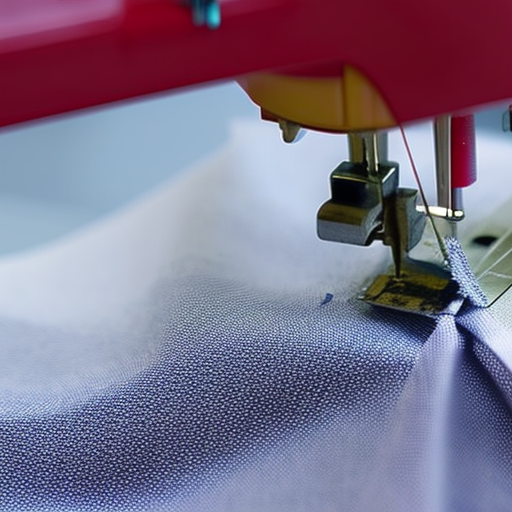Seams are an essential aspect of sewing, ensuring that fabrics are joined together securely and neatly. Different sewing methods are used for different types of seams, depending on the desired outcome and the type of fabric being worked on.
1. Plain Seam
The plain seam is the most basic type of seam used in sewing. It involves joining two pieces of fabric together with a simple straight stitch. This type of seam is commonly used for light to medium-weight fabrics. To create a plain seam:
- Place the fabric pieces with right sides facing each other.
- Align the edges of the fabric.
- Sew a straight stitch along the edge, typically with a seam allowance of 1/4 inch or 5/8 inch.
- Press the seam flat or open to ensure a neat finish.
2. French Seam
The French seam is commonly used when a neat and polished finish is desired, especially for lightweight fabrics or garments that will be seen from both sides. This type of seam encloses the raw edges, providing a clean and professional look. To create a French seam:
- Place the fabric pieces with wrong sides facing each other.
- Sew a narrow seam along the edge, typically with a 1/4 inch seam allowance.
- Trim the fabric close to the seam.
- Press the seam open.
- Fold the fabric along the seam, enclosing the raw edges.
- Sew a second seam, typically with a 3/8 inch seam allowance, to secure the folded edges.
3. Flat-Felled Seam
The flat-felled seam is commonly used in jeans, shirts, and other heavy-duty garments that require strength and durability. It is easily recognizable by its visible double row of stitching on the right side of the fabric. To create a flat-felled seam:
- Sew a plain seam with a 1/4 inch seam allowance.
- Trim one side of the seam allowance to about 1/8 inch.
- Press the untrimmed seam allowance to one side.
- Fold the trimmed seam allowance over the pressed edge, completely enclosing it.
- Sew a second line of stitching close to the folded edge to secure the seam.
These are just a few of the many sewing methods used to create different types of seams in fabric. Depending on the project and the desired outcome, other sewing techniques, such as the overlock stitch or the blind hem, may also be employed. With practice and experimentation, you’ll become proficient in creating strong and aesthetically pleasing seams.







